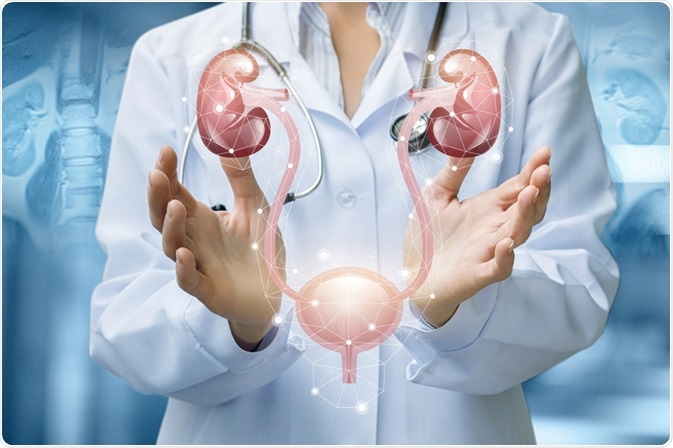Urodynamic testing or urodynamics is any procedure that examines the function of the bladder, sphincters and urethra in storing and releasing urine from the body. As there are many different types of these tests, the procedure can vary greatly according to which is used.
Most tests examine the ability of the bladder to contain urine and empty it in a complete and controlled manner. Some tests are able to detect the involuntary contraction of the bladder that may be responsible for any leakage of urine.
 Image Credit: Natali _ Mis/Shutterstock.com
Image Credit: Natali _ Mis/Shutterstock.com
Purpose of urodynamic tests
Urodynamic tests may be indicated if symptoms suggestive of abnormalities of the lower urinary tract present. These symptoms may include:
- Urinary incontinence
- Frequent urination
- Painful urination
- Sudden urges to urinate
- Difficulty urinating (to begin stream or empty bladder completely)
- Recurrent urinary tract infections
Therefore, prior to any urodynamic tests being undertaken, there should be a consultation between the doctor and patient to discuss relevant symptoms and the need for the tests.
Preparation of urodynamic tests
The majority of urodynamic tests do not require specific preparations in order to provide the necessary information. In most cases, patients can eat and drink as usual in the lead-up to the procedure.
However, some particular tests may require slight alterations in the fluid intake in the preceding hours before the examination, or to cease taking certain medication.
Some tests need the bladder to be full of urine for the test to be conducted. In this case, the patient may be advised to arrive at the clinic with a full bladder or may be instructed to drink fluid upon arrival.
Types of urodynamic tests
The exact procedure of urodynamic testing depends on the type of test used. Some tests involve simple observation of the urine flow, whereas others require complex instruments that provide precise quantitative results.
For example, a simple observation test may involve recording the time and volume of urination, which indicates the urine flow rate. Additionally, the ability to control the urine flow by stopping midstream may also be assessed via observation.
Other non-invasive tests include post-void residual (PVR) urine volume measurement and single-channel cystometrogram (CMG), which assesses the sensation of the bladder as it fills.
In some cases, more sophisticated testing methods may be required. For example, diagnostic imaging techniques may be used to monitor the bladder as it fills up with and empties of urine. Pressure monitors and muscular or nerve sensors can also provide valuable information during a urodynamic test.
Follow-up
Depending on the tests used in the examination, some patients may feel some discomfort upon urination for several hours following the test. Staying hydrated by drinking sufficient water can help to reduce this effect. Some patients find that using a warm, damp washcloth to dab at the urethral opening can relieve any significant pain.
There is a slightly increased risk of urinary tract infection (UTI) following so urodynamic testing procedure. If there is a heightened risk of this, prophylactic antibiotics may be prescribed to eradicate any bacteria before it proliferates. If patients notice signs of infection, such as pain, chills or fever, they should seek medical advice as soon as possible.
The results of some tests (e.g. cystometry and uroflowmetry) are usually available immediately following the examination. Other tests (e.g electromyography and video urodynamic tests) may take several days for the results to become available.
References
Further Reading